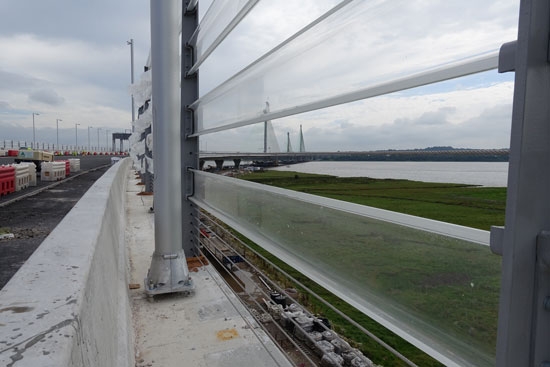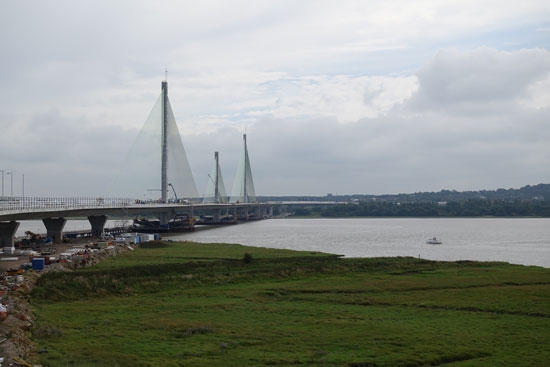A bridge over the River Mersey
In October 2017 the new Mersey Gateway Bridge opened across the River Mersey. Working as a trusted supplier to Cenpart – a protection and security engineering company based in the Midlands – Joseph Ash Galvanizing was proud to provide the steel protection.
The Mersey Gateway Bridge was part of the Mersey Gateway Project, commissioned by Merseylink who have the responsibility for the design, build, finance, operation and maintenance of the new bridge and associated road infrastructure over a 30-year period.
This was a major civil engineering scheme to build a new six-lane cable-stayed toll bridge, and a 9-kilometre road network connecting the new bridge to the main motorway network in the North West of England.
The new bridge is over 2.3km long with a river span of 1km. It is made from reinforced concrete, and the spans are supported by steel cable stays, attached to pylons. The bridge also features an important wind deflection barrier on both sides.
The importance of the wind barrier
Due to the large span of the bridge and its exposed nature, at the design stage there were concerns about the effect of high winds on crossing vehicles, particularly high-sided ones. The wind deflection barrier was designed to withstand a once in 50-year wind event (based on historical data) and protect the crossing vehicles. Due to local prevailing winds the barrier was designed to be higher on one side (4m) than the other (2.5m), as it would be more susceptible to higher winds from that side.
Involved at an early stage in the design process, Cenpart was commissioned to fabricate the support posts and clamping brackets, that carry the C shaped Perspex horizontal members to form the important wind deflection barriers.
Neil Callow, Managing Director at Cenpart said: “Cenpart was chosen by Merseylink as we have the necessary EN 1090 certification and execution class to undertake the work. We also had the capability to produce the volumes of galvanized steel required to meet looming deadlines, which were compressed due to delays in the order being placed.”
The importance of galvanization
Hot dip galvanizing has been used worldwide for well over a century because it provides a long-life, low-maintenance corrosion protection which safeguards steel from atmospheric attack. This is incredibly important in huge scale engineering projects that need to provide safety standards for the public, as well as longevity for the structure being built.
Cenpart chose Joseph Ash’s Walsall plant to galvanize the steel.
Steel tonnage
A huge amount of steel was needed for the project. The 4m high posts were made from 20mm thick steel, and the 2.5m high posts were made from 10mm thick steel. A total of 1370 posts and 10750 clamping brackets weighed in at 250 tonnes of steel, with over 37km of welding.
Joseph Ash Walsall collected the steel from Cenpart’s grit blasters. The posts required grit blasting to SA 2.5 standard as the specification for hot dip galvanizing called for a 140 micron nominal thickness coating. This was easily achieved and Joseph Ash’s quality department recorded average pick up thickness throughout the contract to confirm the specification was met.
The 11000 loose clamping brackets were also spun galvanised by Joseph Ash Telford.
After the steel was treated, Joseph Ash Walsall delivered it to Cenpart’s painters for an application of a multi coat marine grade paint system.
The finished project
The Mersey Gateway Project has provided huge benefits to the North West. Not only does it now connect the towns of Runcorn and Widnes and relieves the congestion on the old Silver Jubilee Bridge, but it also employed over 1,000 people and issued contracts to companies in the North West totalling £129 million.
Joseph Ash Galvanizing and Cenpart were both proud to be involved in such a huge scale engineering project.

